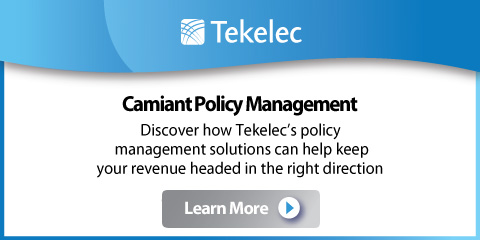|
|

Challenges Ahead
In legacy data environments, operators
used provisioning systems, such as
authentication, authorization and
accounting (AAA), to configure profiles.
These profiles were applied only once
when the user established a data
session. This static approach was
sufficient when a one-size-fits-all, flat-
rate model ruled. However, as demand
for personalized services continues to
grow, mobile providers must be able to
differentiate based on service level,
subscriber tier, roaming and location
status, network condition, and
application. Furthermore, they must be
able to make these distinctions both at
session startup and during the middle
of a session. In order to economically
|
|
The coupling of LTE with policy control promises to help resolve key mobile broadband economic challenges. |
|


percent of all mobile data usage in the
US by 2015. Smartphones are
expected to consume as much as 50
times more bandwidth than voice-
centric handsets. Exponential increases
in data traffic can choke networks to
the point where a substantial number
of users may encounter poor service
experiences. Without intelligent
solutions in place for managing the
dramatic growth in bandwidth
consumption, consumers are likely to
become frustrated with degraded
service, especially during peak-usage
hours.
|
|
|
|
|

scale their operations, increase
revenues and retain customers,
providers need a centralized policy
control solution for managing the
increasing sophistication of broadband
applications.
Along with the challenges involved with offering differentiated services comes
the issue of managing the associated bandwidth consumption. The basic economics
of network cost versus subscriber value that have driven broadband deployment
are under pressure as bandwidth growth threatens to tilt against providers.
This matter has become especially
pressing in light of the rapid increase in
the use of video and data-enabled
mobile devices. Coda Research predicts
that mobile video will account for 68.5
|
|

Conclusion
While LTE networks will deliver more raw bandwidth, all of that bandwidth could
be quickly consumed by video or other bandwidth-intensive applications if
operators don’t effectively manage their users with a real-time, targeted policy
approach. From prioritization to tiering, the coupling of LTE with policy
control promises to help resolve key mobile broadband economic challenges and
support a new generation of revenue-generating services. Equipped with
intelligent policy management, operators can shape and manage network demand,
revenue contributions from differing classes of customers, capital expenditures
and overall growth of the mobile broadband market.
|
|
|
|
|






